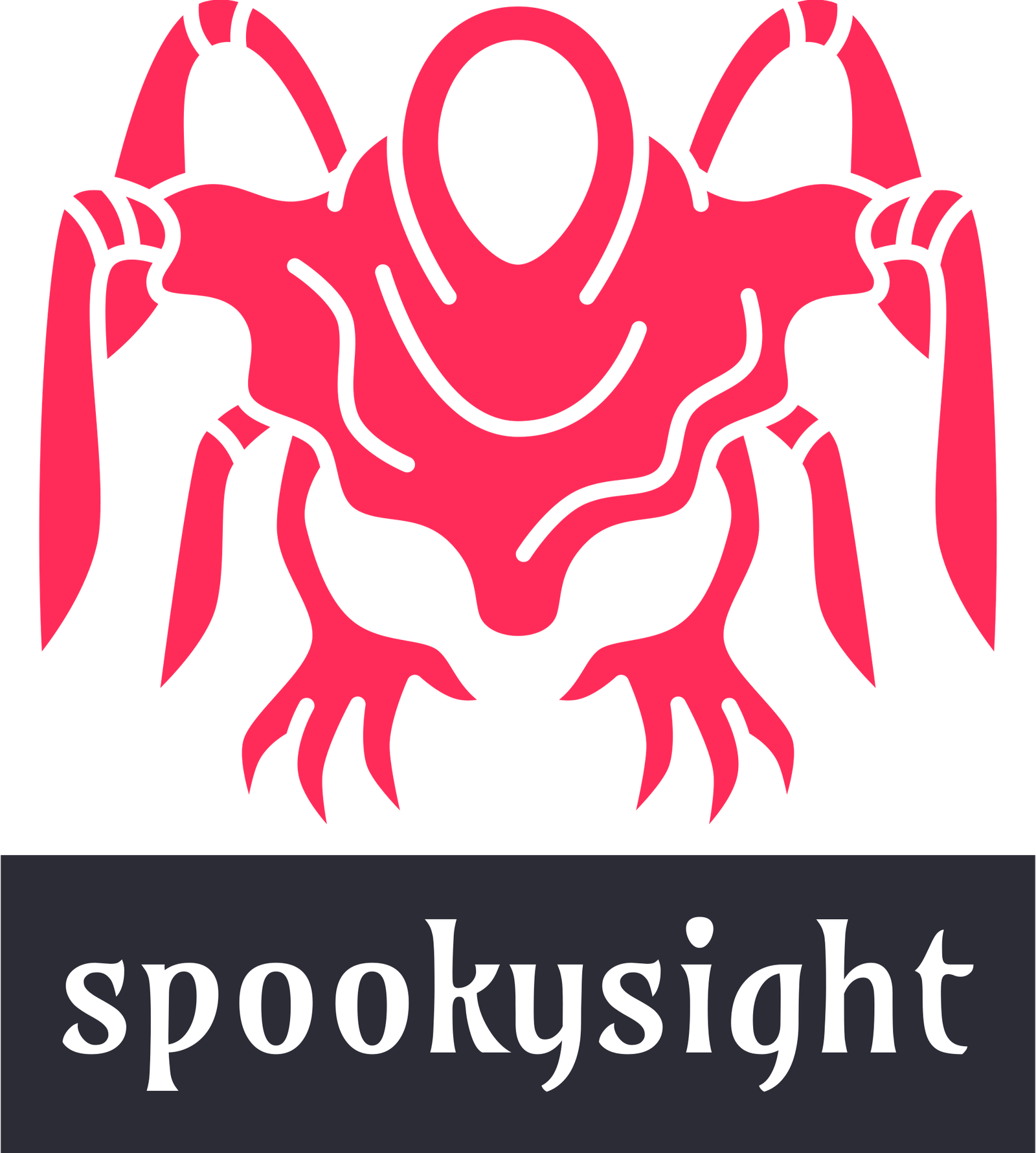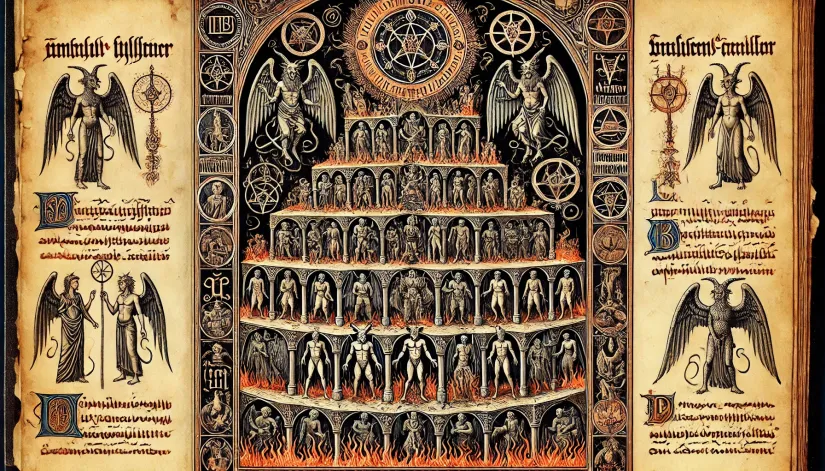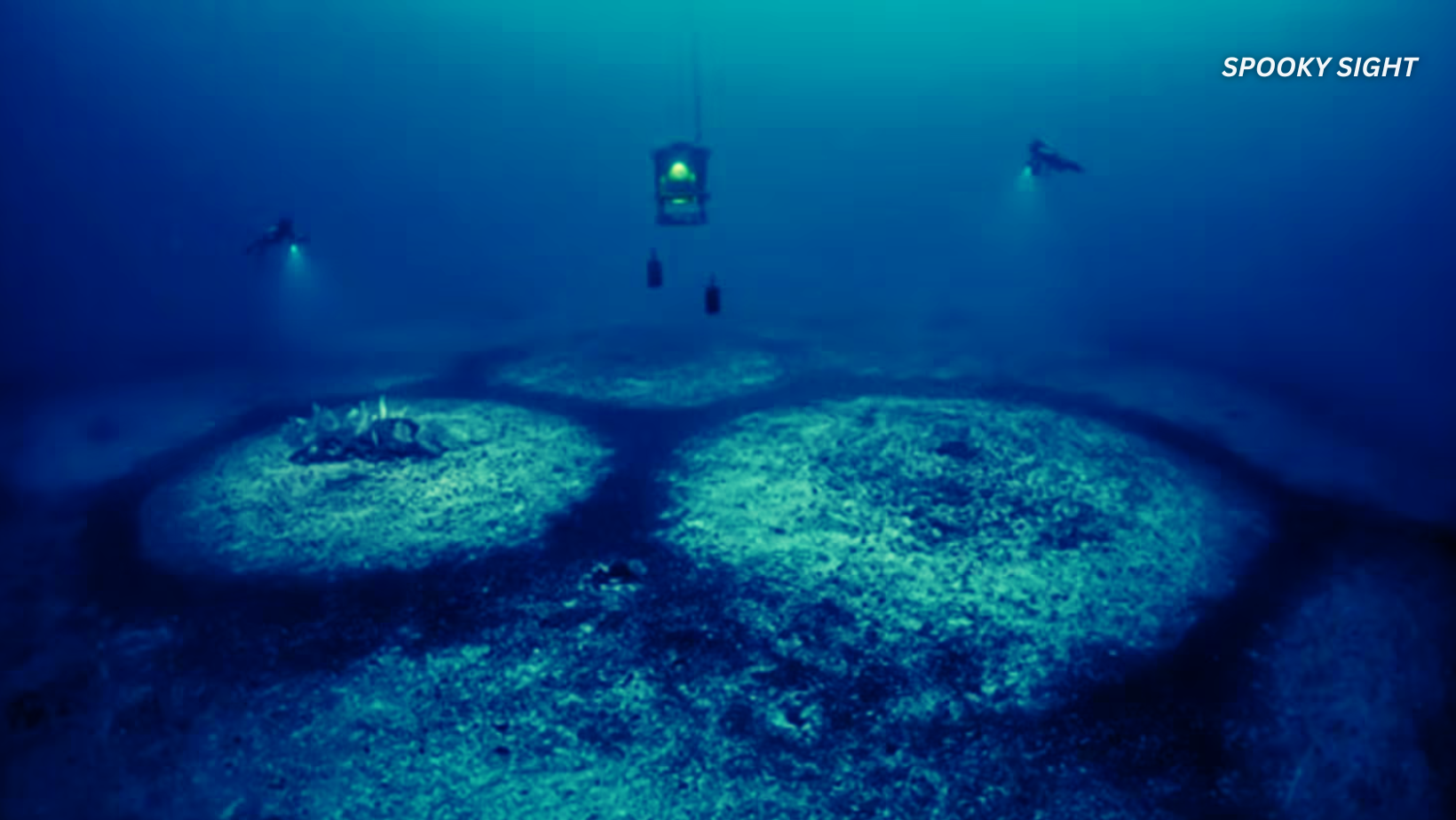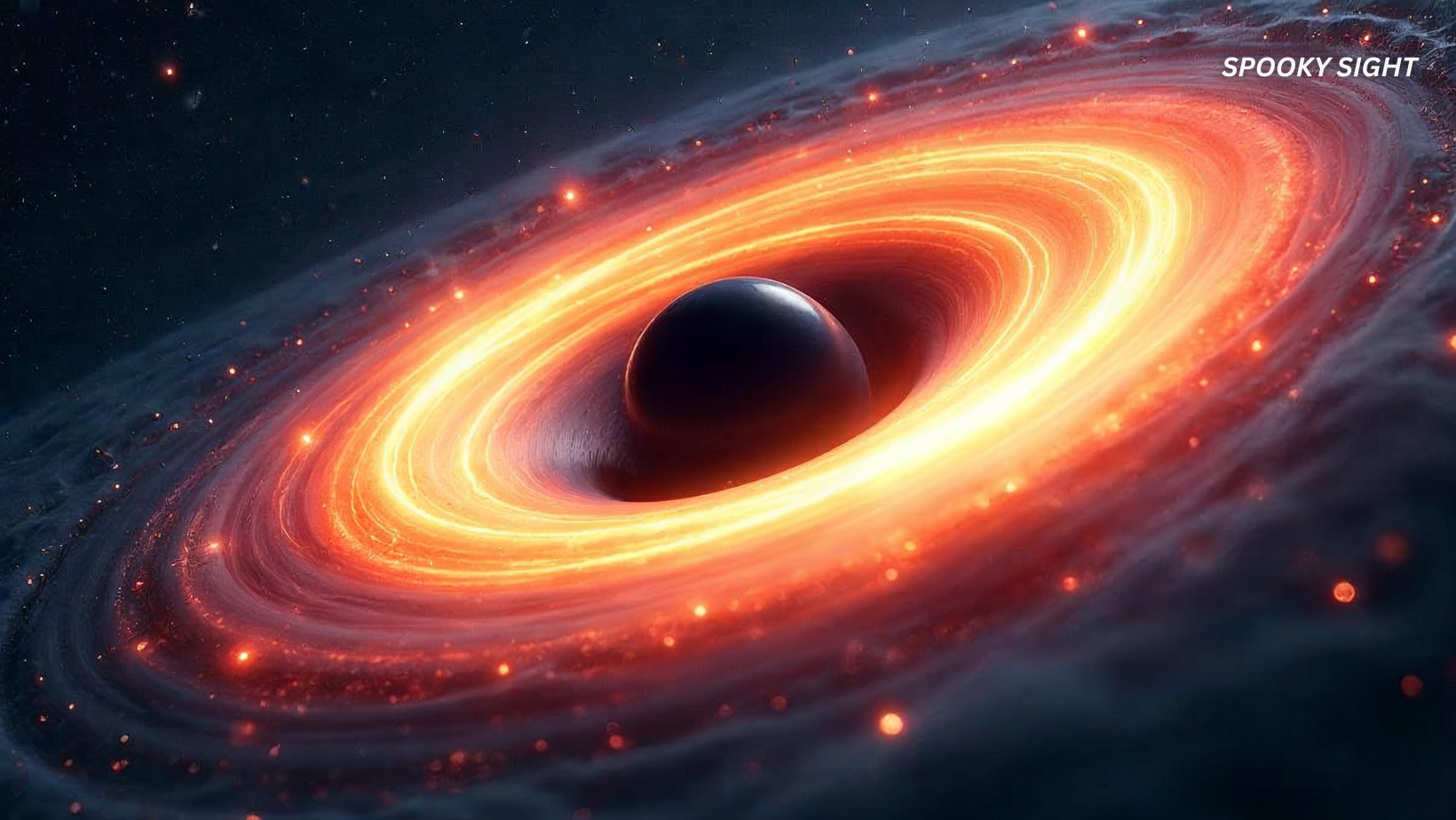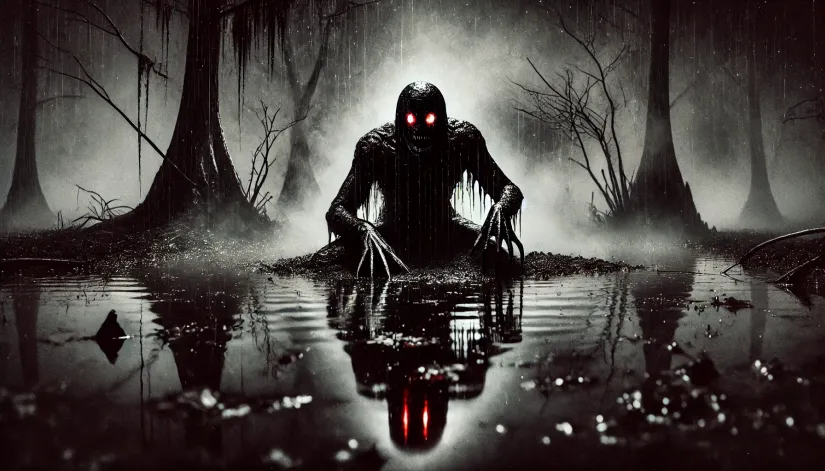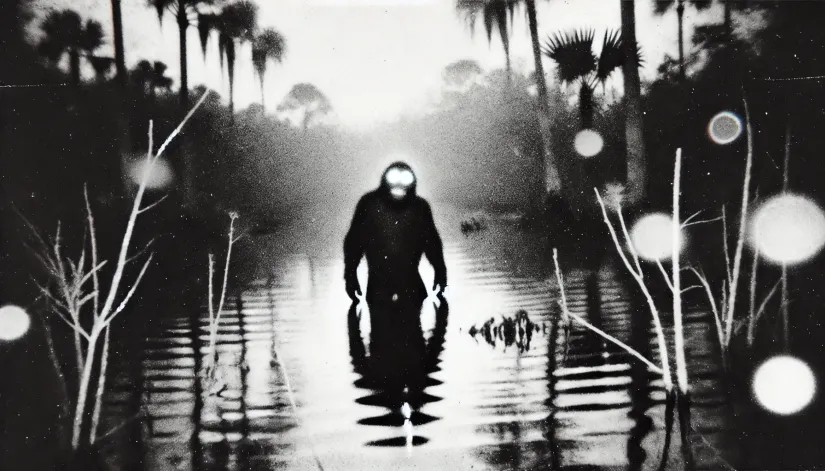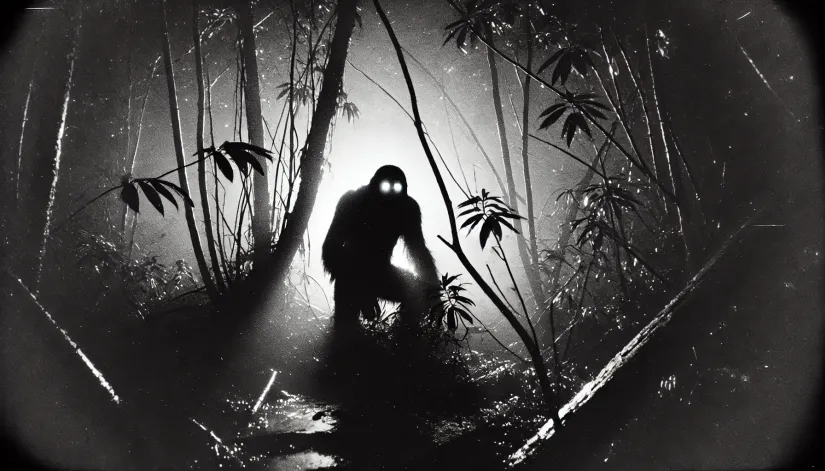The classification of demons and the hierarchy of Hell is defined by several key texts.
Among these, the Lemegeton Clavicula Salomonis—also known as the Key of Solomon—stands out as one of the most infamous. It’s also one of the most exhaustive works about the dark hierarchy that governs the infernal realms.
But what secrets do these names hold? What powers do these demonic lords command, and how do they fit into the larger structure of Hell’s hierarchy?
At SpookySight, we walked the extra mile to bring you the most extensive and comprehensive classification of demons you will find anywhere online.
In this article:
The Classification of Demons
Unlike the hierarchy of angels, ranking demons isn’t just challenging—it’s almost downright impossible. Especially given the large number of old writings, each presenting a different ranking system.
For example, some older religious texts reference no less than 72 demon rulers of Hell. Others talk about the Four Crowned Princes of Hell. And, to make things even more complicated, other writings mention not four… but Seven Princes of Hell.
But here’s the thing: the Vatican doesn’t recognize just any old manuscript. In fact, they’ve been pretty selective. And only acknowledged a handful of these texts as authoritative.
Among the chosen few are “Lemegeton Clavicula Salomonis” (“The Key of Solomon“), “The Lanterne of Light” (written between 1409 and 1410), “De Occulta Philosophia” (1509-1510), and “Treatise on Confessions by Evildoers and Witches” (from 1589).
However, SpookySight’s classification of demons and the hierarchy of Hell will not take into consideration just these books. Let’s start:
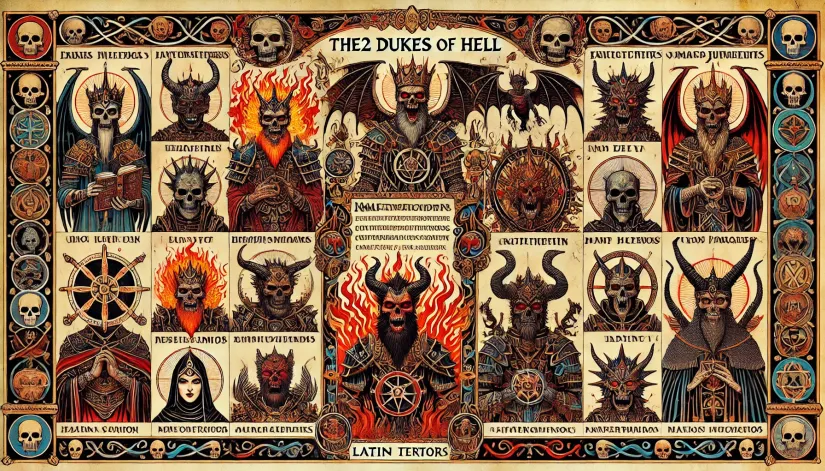
Classification of Demons According to Lemegeton
“Lemegeton Clavicula Salomonis” (you probably heard of this book as “The Key of Solomon“) is, without doubt, one of the most well-known grimoires on demonology.
This collection of five books—presumably put together around the mid-17th century—uses information from many different sources. Including ancient religious texts, historical manuscripts, and confessions forced from accused witches (some date back to the 10th century).
The Lemegeton’s five books are:
Book #1: Ars Goetia
The first and most famous book. It’s also the one that provides a detailed classification of the 72 demons that rule Hell. Names, ranks, appearances, powers, and even the rituals someone may use to summon and control them.
The Nine Princes of Hell are among the most notable entries here.
Book #2: Ars Theurgia Goetia
The 2nd book is not so much about the hierarchy of Hell but more about the spirits that govern the air and the four cardinal directions.
According to “Ars Theurgia Goetia,” there are 31 aerial spirits. They have different ranks, powers, and specific summoning rituals. When under the summoner’s control, these spirits can perform tasks or reveal secrets.
In general, the 31 spirits are considered less malevolent than the demons in “Ars Goetia.” But still powerful and very dangerous.
Book #3: Ars Paulina
“Ars Paulina” is split into two parts. The first part focuses on angels and spirits associated with each hour of the day.
On the other hand, the second part outlines the 12 spirits of the zodiac (who can influence people’s fate and destiny based on birth charts).
Book #4: Ars Almadel
Ars Almadel is probably the least-known book of the “Lemegeton.” It doesn’t say anything about the hierarchy of Hell, but it provides instructions on how to build (and use) a magical device called the Almadel (a wax tablet used to communicate with or summon the angels of the four “altitudes” or the Four Layers of Heaven).
Book #5: Ars Notoria
The 5th book is a collection of mystical prayers and invocations to enhance the practitioner’s memory, wisdom, and eloquence.
Unlike the other four books, “Ars Notoria” is more focused on divine rather than infernal magic. It’s all about granting the practitioner mastery over various academic and spiritual disciplines.
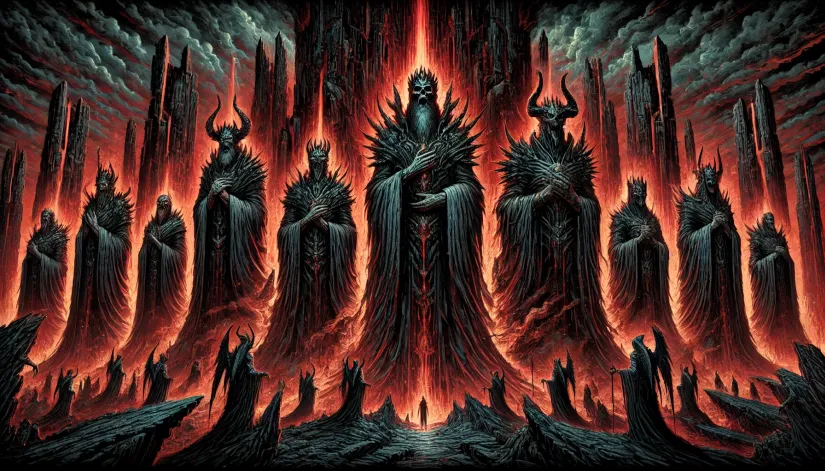
The Hierarchy of Hell According to Ars Goetia
Let’s get back to our hierarchy of Hell. When it comes to the classification of demons, most of the information is found in the first book, “Ars Goetia“—largely inspired by “Pseudomonarchia Daemonum” (Johann Weyer, 1577).
There are some differences, however. For example, the spelling of some demon names was changed. “Ars Goetia” also introduces a few new demons (such as Seere, Vassago, Dantalion, and Andromalius) who were not mentioned in Weyer’s earlier work.
Here’s how the classification of demons and the hierarchy of Hell are laid out according to “Ars Goetia” (the 72 Rulers of Hell):
The Nine Kings of Hell:
The Six Princes of Hell:
- Ipos
- Vassago
- Orobas
- Seere
- Sitri
- Stolas
The Six Counts of Hell:
- Andromalius
- Murmur
- Halphas
- Bifrons
- Furfur
- Räum
The 22 Dukes of Hell:
- Zepar
- Focalor
- Aim
- Amdusias
- Valefor
- Crocell
- Barbatos
- Dantalion
- Berith
- Vual
- Agares
- Buné
- Gremory
- Sallos
- Eligos
- Gusion
- Vapula
- Flauros
- Alloces
- Astaroth
- Bathin
- Vepar
The 15 Marquises of Hell:
- Kimaris
- Sabnock
- Orias
- Leraje
- Shax
- Samigina
- Ronové
- Phenex
- Marchosias
- Naberius
- Forneus
- Decarabia
- Andras
- Amon
- Andrealphus
The 13 Great Presidents of Hell:
- Ose
- Morax
- Valac
- Caim
- Foras
- Haagenti
- Botis
- Amy
- Gäap
- Buer
- Glasya-Labolas
- Marbas
- Malphas
The One Grand Knight of Hell:
- Furcas
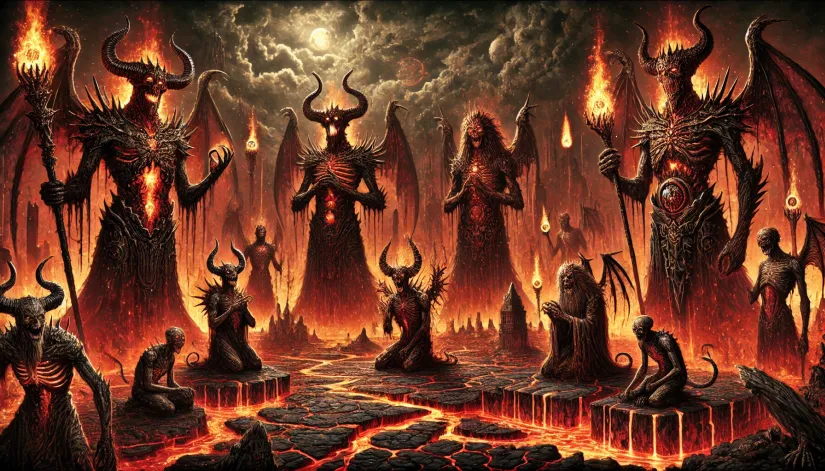
The Hierarchy of Hell According to De Operatione Dæmonum
In the 11th century, Michael Psellos (a Byzantine scholar and philosopher) wrote “De operatione dæmonum” (eng. “On the Operation of Demons“). It was a groundbreaking work that also looked into the nature and hierarchy of demons.
In fact, even today—more than 900 years later—Psellos’ book still stands as one of the most influential texts on demonology.
So, what made Psellos’ classification of demons such a unique perspective? How the infernal realms are structured.
Psellos’ classification wasn’t just an academic exercise—it laid the groundwork for how later religious scholars and occultists would approach the study of demons.
His influence stretched far beyond his own time. It even inspired later works—like Francesco Maria Guazzo’s “Compendium Maleficarum” (a key text in the witch-hunting craze of the 17th century).
Psellos proposed a different hierarchy of Hell that orders demons into six distinct types. Each is associated with very specific elements and realms of existence:
1) Leliurium (Igneous)
These are the demons of fire, fierce and destructive. They embody the raw, uncontrollable power of flames. Leliurium demons are often associated with sudden, violent outbreaks of anger and chaos.
According to Psellos, they reside in the fiery depths of Hell, where they govern over heat, combustion, and all things that burn.
2) Aërial, Marine (Apoous)
Water and air demons. They control the seas, rivers, and the very atmosphere.
Aërial and Marine demons are masters of storms, floods, and other natural disasters that involve water or wind. They can be both ethereal and elusive—easily moving between the skies and oceans.
3) Terrestrial (Earthly)
Terrestrial demons rule over the earth, soil, and all that lies upon it. They are often seen as the driving forces behind natural decay and rot. They also have power over the physical world and its life cycles.
Their influence is felt in the shifting of the land, the withering of plants, and the inevitable return of all things to dust.
4) Subterranean
Given their name, underground demons mostly dwell beneath the earth’s surface. They hide in the dark, far from the sun’s light.
But that doesn’t mean they can’t cause trouble. Psellos thought these lesser demons were usually responsible for mining accidents, sinkholes, and other underground calamities.
They guard the earth’s treasures (like rare minerals) while also being responsible for its most terrifying phenomena—such as earthquakes and volcanic eruptions.
5) Lucifugus (Heliophobic)
Similar to the underground demons, Lucifugus demons also fear and flee from the light (especially sunlight).
However, despite this apparent weakness, Psellos believed the Heliophobic devils are some of the most dangerous. They operate in the shadows and are rarely seen.
Their aversion to light symbolizes their connection to secrecy, deception, and the darker aspects of human nature. They thrive in the darkness. They can corrupt and influence without detection.
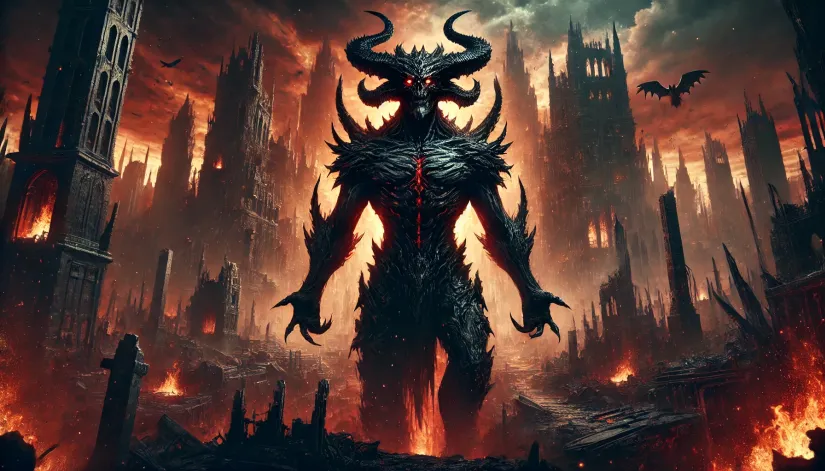
Hierarchy of Hell According to The Lanterne of Light
In 1409-1410, “The Lanterne of Light” (eng. “Lantern of Light“), a pivotal religious treatise often attributed to the reformer John Wycliffe, introduced another system for ranking demons.
Wycliffe’s work meticulously linked each demon to one of the seven deadly sins. It was his way of showing how these infernal beings work to lead humans astray.
Decades later, John Wycliffe’s classification of demons became a cornerstone in studying demonology.
The Lanterne of Light classifies demons as follows:
1) Mammon (Greed)
Mammon is the demon of avarice. The insatiable desire for wealth and material gain. In Wycliffe’s view, Mammon fuels the endless pursuit of riches, convincing humans to prioritize money over morality.
From hoarding gold to ruthless business practices, Mammon’s influence can be seen in every corner of human society where greed prevails.
2) Lucifer (Pride)
Lucifer (the fallen angel and most notorious of demons) represents the sin of pride. His downfall from Heaven was caused by his overwhelming pride and desire to be greater than God.
In John Wycliffe’s classification of demons, Lucifer is the source of all human arrogance, vanity, and the delusion of self-importance. All heavy sins that lead people to elevate themselves above others—and sometimes, even above the divine.
3) Asmodeus (Lust)
Asmodeus is the demon of lust. Of the overwhelming desire for physical pleasure. Asmodeus is the driving force behind all forms of sexual temptation and moral corruption.
According to Wycliffe, the demon of lust works to ensnare people in forbidden relationships, unbridled passions, and desires that ultimately lead to ruin.
4) Beelzebub (Envy)
To Beelzebub (the “Lord of the Flies”), Wycliffe assigned the sin of envy. Beelzebub incites jealousy and resentment in the hearts of humans. It always pushes them to crave what others have.
Whether it’s a neighbor’s success, beauty, or possessions, Beelzebub stokes the flames of envy that can lead to hatred and division.
5) Abaddon (Sloth)
Abaddon (the “Angel of Death”) gets the sin of indolence. But not just in the sense of laziness. It’s about the spiritual apathy and indifference that keep people from living meaningful, purposeful lives.
Abaddon’s influence can be seen when people neglect their duties, shirk responsibilities, and waste their potential, leading to a life of stagnation.
6) Satan (Wrath)
Satan, the ultimate adversary, is associated with the sin of wrath. Of uncontrolled anger that often results in violence and destruction.
Satan’s goal is to spread the flames of anger, turning minor disagreements into major conflicts, and pushing people toward acts of revenge and brutality.
His influence can be seen in wars, feuds, and any situation where rage spirals out of control.
7) Belphegor (Gluttony)
Belphegor is the demon of gluttony. But not just excessive eating and drinking. It’s the demon of overindulgence in all forms.
Belphegor tempts humans to consume far more than they need. Which ultimately leads to waste, addiction, and a lack of self-control.
His influence can be observed wherever people indulge in excess (whether it’s food, alcohol, or any other pleasure taken to the extreme).
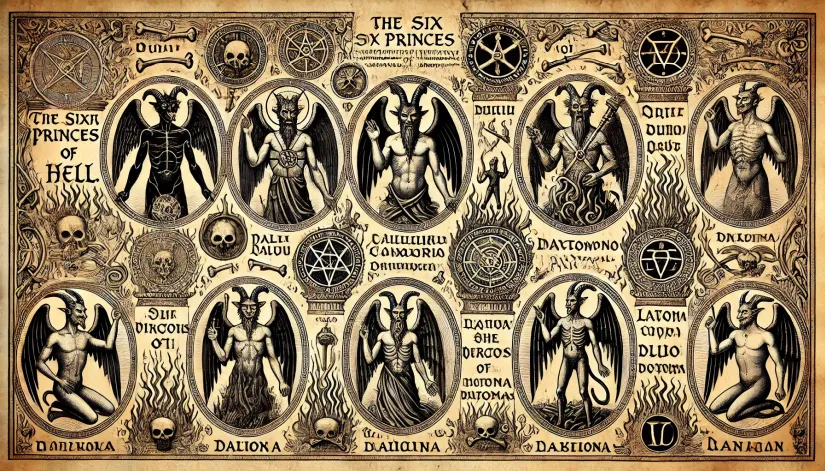
Classification of Demons According to Le Livre des Esperitz
“Le Livre des Esperitz” is a lesser-known (yet still influential) grimoire from the 15th or 16th century—the time of many witch trials, werewolf trials, and the belief in demonic forces was at its peak.
While not so extensively studied as similar texts, “Le Livre des Esperitz” was a significant source of inspiration for Johann Weyer when he compiled his own demon hierarchy in “De Praestigiis Daemonum.”
However, Weyer’s work famously lists 69 demons of Hell. “Le Livre des Esperitz” is a bit more mysterious, cataloging only 46 demons. Which might suggest that the grimoire could be incomplete. Or perhaps intentionally selective.
Despite this, “Le Livre des Esperitz” is still viewed as a credible and authoritative source of occult literature.
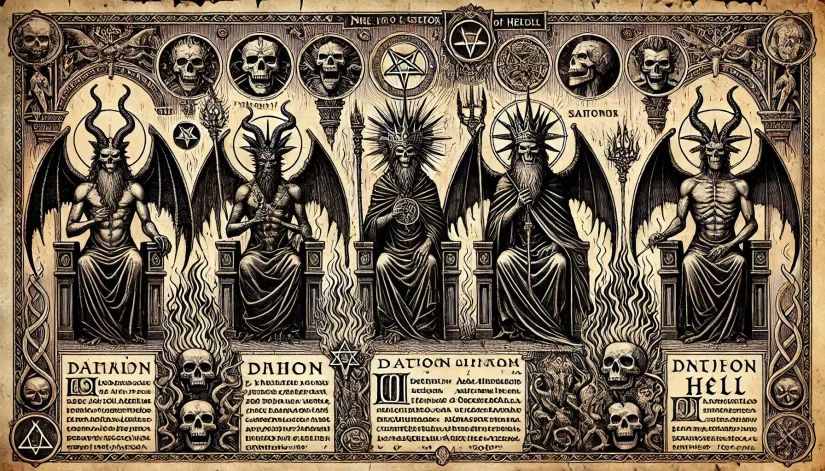
Classification of Demons by Alfonso de Spina
In 1467, Alfonso de Spina (a Spanish Franciscan bishop and theologian) introduced a novel classification of demons in his work, “Fortalitium Fidei” (eng. “The Fortress of Faith“).
Why novel? Spina’s hierarchy of demons integrated folklore, theological concepts, and the sociopolitical concerns of his time.
Unlike other demonologists—who focused primarily on hierarchical rankings and the roles of demons in the infernal realm—de Spina took a much broader approach.
His hierarchy of Hell is not just by demon ranks (or specific sins they tempted humans with) but also by their interactions with humans in everyday life. Particularly through beliefs in incubi, succubi, and other supernatural beings that were more common in European folklore.
For instance, he included categories for demons believed to interfere with human reproduction (such as the abovementioned incubi and succubi), as well as demons thought to cause nightmares (known as drudes in Germanic folklore).
Spina’s classification of demons:
- Demons of Fate: Demons who influence the destiny and outcomes of human lives.
- Incubi and Succubi: Demons who engage in sexual activities with humans, often leading to the birth of hybrid beings (Cambions).
- Cambions and Other Demons Born from the Union of a Demon with a Human: These often possess both human and demonic traits.
- Familiars: Demons that serve witches and sorcerers. They can take the form of different animals or other entities to assist in magical practices.
- Drudes (Nightmare Demons): Demons responsible for causing nightmares and disturbing sleep.
- Demons that Attack Saints: Can specifically target holy people, trying to corrupt or harm them through various means.
- Demons of Lies: Demons who specialize in deceit, spreading falsehoods, and leading people away from the truth.
- Demons that Try to Deceive Old Women into Attending the Witches’ Sabbath: Demons that prey on vulnerable individuals (especially elderly women), convincing them to participate in witchcraft and attend the infamous Witches’ Sabbath.
- Demons of Heresy: Demons that promote heretical beliefs. They lead people away from traditional religious teachings.
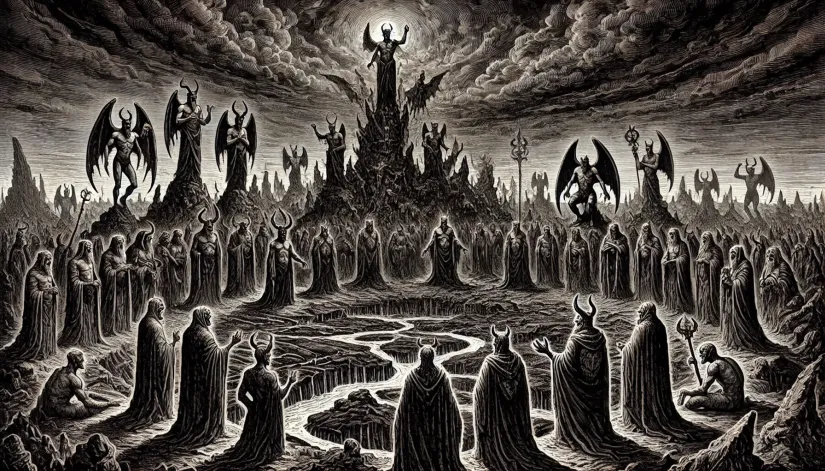
The Hierarchy of Hell According to Agrippa
In “De Occulta Philosophia” (1509-1510), Heinrich Cornelius Agrippa (a German polymath and occult writer) introduced another sophisticated and highly structured system for classifying demons.
Agrippa’s approach was also unique. He used a concept he referred to as “ladders” or “scales” to differentiate demons based on their levels of power, influence, and proximity to the infernal hierarchy.
Each “ladder” represented a different rank (or tier) within the demonic realm. In short, Agrippa organized Hell’s inhabitants into a system that mirrored Heaven’s angelic hierarchies.
For instance, his “Ladder of Unity” identifies Lucifer (the ultimate fallen angel who led the rebellion against God) as the supreme ruler of Hell.
Agrippa documented other high-ranking demons below Lucifer on this ladder—such as Behemoth and Leviathan, who occupy significant positions in the demonic realm.
“De Occulta Philosophia” classification of demons is as follows:
1st Ladder: Ladder of Unity
- Lucifer—One Prince of Rebellion, of Angels, and of Darkness
2nd Ladder: Ladder of the Binary
- Behemoth—Chief Devil
- Leviathan—Chief Devil
3rd Ladder: Ladder of the Ternary
- Alecto, Megaera, and Tisiphone—The Three Furies of Hell
- Minos, Aeacus, and Rhadamanthus—The Three Infernal Judges
4th Ladder: Ladder of the Quaternary
- Samael (Fire), Azazel (Air), Azael (Water), and Mahazael (Earth)—The Four Elemental Princes of Hell
- Oriens (East), Paymon (West), Egyn (North), and Amaymon (South)—The Four Cardinal Spirits
5th Ladder: Ladder of Six
- Actaeus, Megalesius, Ormenus, Lycus, Nicon, and Mimon—The Six Demons of Calamities
6th Ladder: Ladder of Nine
- Beelzebub—Lord of the Legions of False Gods
- Python—Master of the Spirits of Lies
- Belial—Chief of the Demons of Wickedness and Wrath
- Asmodeus—Sovereign of the Demons of Depravity
- Satan—King of the Deceivers and Miracle Imitators
- Merihem—Ruler of the Winged Demons
- Abaddon—Commander of the Furies
- Astaroth—Head of the Inquisitors and Accusers
- Mammon—Leader of the Tempters
SpookySight clarification regarding Agrippa’s hierarchy of Hell:
In Agrippa’s work, the classification typically involves a structure of three, four, or seven (which are significant numbers in occult traditions). The notion of a “Ladder of Six” and “Ladder of Nine” are most likely later additions (or an interpretation) by subsequent occultists rather than something Agrippa himself defined.
“De Occulta Philosophia’s” system was later adopted and expanded by Francis Barrett in his influential book The Magus (1801). Deeply inspired by Agrippa, Barrett brought these concepts into the 19th century, where they continued to influence occult practices.
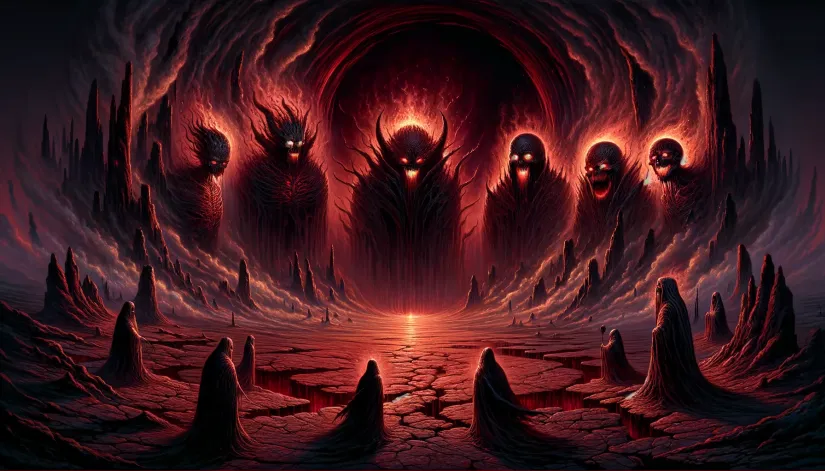
Classification of Demons According to The Book of Abramelin
The “Book of Abramelin” (a noteworthy collection of occult texts from the 14th and 15th centuries) introduced another structured and hierarchical view of the demonic realm.
This work is attributed to Abraham of Worms (a Jewish mystic) and has significantly impacted Western esotericism. Particularly through its detailed instructions on invoking and controlling demons.
In “The Book of Abramelin,” the demons are classified into a somehow basic hierarchy. Four Principal Demon Princes at the top. These are followed by eight Secondary Princes. Each commands vast legions of lesser demons.
Here’s how the hierarchy is laid out:
The Four Principal Demon Princes:
- Lucifer: The supreme ruler of Hell. The embodiment of rebellion against divine authority. In “The Book of Abramelin,” Lucifer is considered the highest-ranking demon. He remains a symbol of pride and the original fall from grace.
- Leviathan: Often depicted as a massive sea serpent or dragon, Leviathan is envy and chaos. One of the most powerful demons in the infernal hierarchy governs over all Hell’s seas and depths.
- Satan: While often used interchangeably with Lucifer, in “The Book of Abramelin,” Satan is a distinct entity. He symbolizes wrath and the adversarial force against the divine. Satan is a crucial figure in leading souls away from righteousness.
- Belial: The demon of lawlessness and corruption. Belial is associated with deceit and worthlessness. He is depicted as a figure who tempts people into lies and immoral behavior. He commands a significant portion of Hell’s armies.
The Eight Secondary Princes of Hell:
- Astaroth: A grand duke in the demonic hierarchy. Astaroth is associated with sloth and laziness. He is often portrayed as a fallen angel who reveals secrets and gives power to those who summon him.
- Magoth: A lesser-known demon in the hierarchy. Unfortunately, Magoth’s role is less defined in “The Book of Abramelin.” However, he is still considered a powerful prince under the command of the Principal Demons.
- Asmodee (Asmodeus, Ashmedai): Asmodeus is the demon of lust and one of the most notorious figures in demonology. He leads people into obsessive desires and immoral actions (often associated with temporal pleasures and vices).
- Beelzebub: A mighty Prince of Gluttony and one of the most influential demons in Hell. He commands countless legions of demons and is often considered a close ally of Lucifer.
- Oriens: One of the four Cardinal Spirits. Oriens rules over the eastern direction and is associated with the element of air. He has dominion over the eastern parts of the infernal realm and commands legions within this domain.
- Paimon: A demon of great wisdom and knowledge. Paimon is often invoked for his ability to reveal hidden secrets and offer insights into complex matters. He is depicted as riding a camel. Sometimes, he’s accompanied by a host of spirits.
- Ariton (Egin): Ariton is another powerful demon prince who influences hidden treasures and secret knowledge. His role in the hierarchy is tied to pursuing wealth and uncovering mysteries (including those that ordinary people should not have access to).
- Amaymon: The last of the four Cardinal Spirits. Amaymon rules over the southern direction and is associated with the element of fire. He is a formidable demon who commands a vast army of lesser spirits.
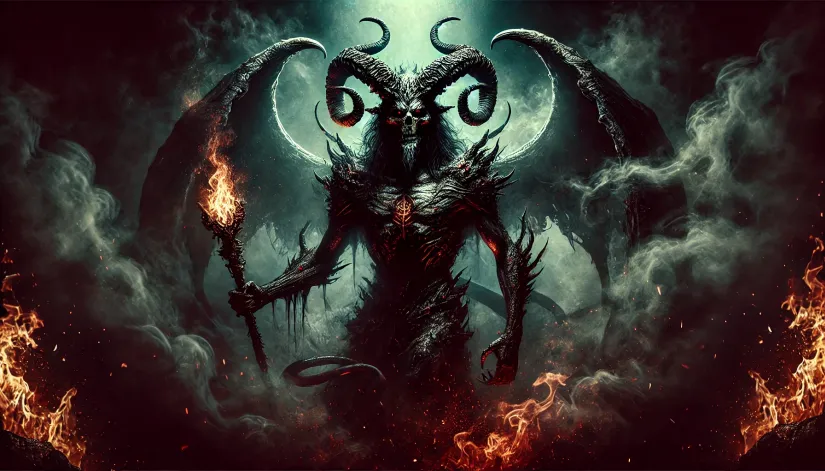
Hierarchy of Hell According to Binsfeld
In his 1589 work, “Treatise on Confessions by Evildoers and Witches,” the German theologian Peter Binsfeld introduced a systematic classification of demons that became known as the Seven Princes of Hell.
Binsfeld’s demonology was notably influenced by earlier works—such as John Wycliffe’s classification based on the seven deadly sins. However, Binsfeld’s approach offered a distinct and more refined perspective.
Ultimately, his work resonated well with the Inquisition during the height of the European witch trials.
Binsfeld’s classification aligns each of the seven deadly sins—pride, envy, wrath, sloth, greed, gluttony, and lust—with a specific demonic prince. This way, he establishes a hierarchy that reflects the moral and spiritual dangers these sins represent.
Binsfeld’s hierarchy of Hell is as follows:
- Lucifer (Pride)
- Mammon (Greed)
- Asmodeus (Lust)
- Leviathan (Envy)
- Beelzebub (Gluttony)
- Satan (Wrath)
- Belphegor (Sloth)
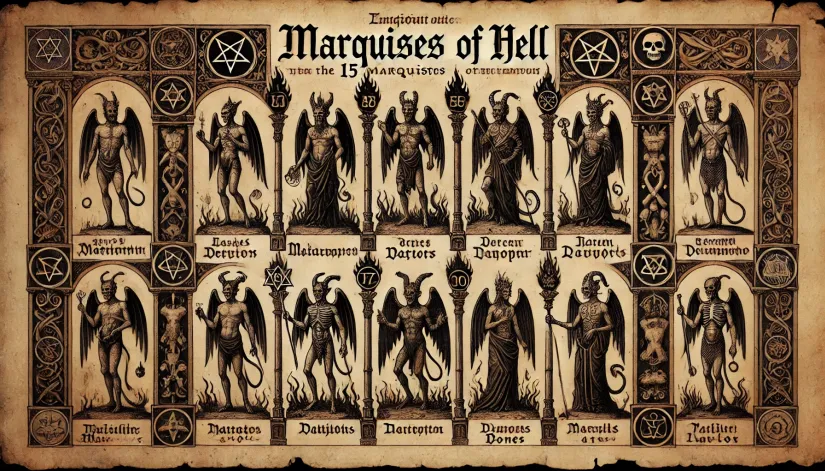
Classification of Demons According to King James VI
In 1597, King James VI of Scotland (who would later become James I of England) wrote “Daemonologie.”
His treatise (composed of three succinct books) was a reflection of the monarch’s intellectual curiosity and a response to the widespread fear of the occult during his reign.
King James VI’s classification of demons is distinctive for its focus on the methods demons engage with to cause harm or suffering—rather than on their hierarchical rank or specific titles.
Daemonologie is not a rigid classification. At least, not like many of his predecessors did. It’s more about the practical impact of demonic influence on the human world.
Moreover, King James VI argued that all demons (despite their power) operate under the sovereign control of God.
According to his view, demons could only act with divine permission. Often as tools of punishment for those who strayed from God’s path.
Classification of demons according to King James VI:
1) Spectra (Spectres)
These ghostly apparitions haunt houses, castles, and other desolate places. King James VI believed Spectra are restless spirits that disturb places where they once lived or died.
They are malevolent wraiths that can manifest in various forms (often with the intent to terrorize the living).
2) Possession
Perhaps the most feared of all demonic activities (at least according to King James VI), Possession is a category of demons that can take control of a person’s body. This way, the entities can force people to act against their will.
Possession is the ultimate violation of a person’s freedom. The demon’s will completely overrides that of the human host.
3) Obsession
Obsession comprises spirits that relentlessly pursue people. They disturb people’s peace and sanity.
However, unlike Possession, these demons do not involve taking control of the body. Instead, they primarily target the mental and emotional health of the victim.
These demons are also known for their persistence. They typically bring their victims to the brink of madness with constant harassment and interference in their lives.
4) Fairies
Unlike the whimsical creatures of folklore, King James VI identified Fairies as deceptive spirits embodying false prophets.
These entities are not benign. Rather, they lead people astray by imitating divine or prophetic powers, spreading falsehoods, and creating confusion.
In Daemonologie, fairies are seen as part of the broader spectrum of demonic forces, subtly corrupting the beliefs and actions of those they deceive.
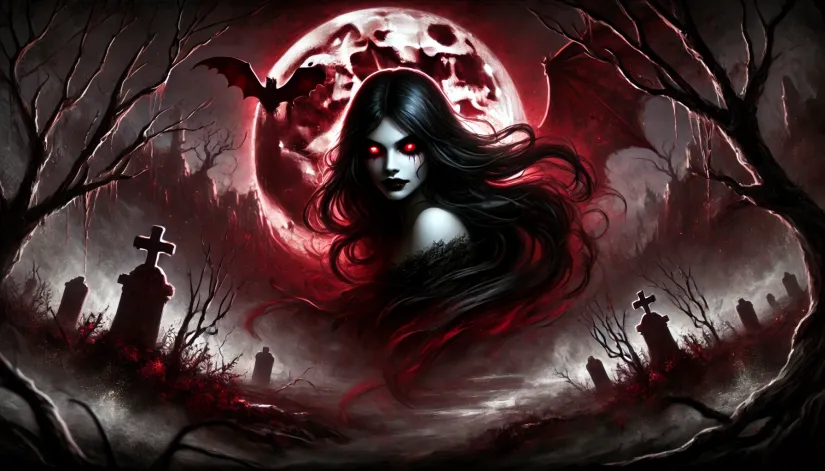
Classification of Demons by Sebastien Michaelis
In 1613, Sebastien Michaelis introduced a detailed classification of demons in his work “Admirable History.”
Now, here’s something interesting about Michaelis’ ranking.
Unlike most other authors who took inspiration from other works, Michaelis classified demons based on the revelations provided by the demon Berith during an intense exorcism. Berith had allegedly possessed a nun and disclosed information about the demonic hierarchy.
Michaelis’ system draws heavily on pseudo-Dionysian hierarchies. He aligns the demons with specific sins they use to corrupt humanity.
His ranking also includes the figures who stood as the most formidable opponents of these demons—saints and holy individuals who resisted temptation and maintained their faith in God.
Michaelis’ hierarchy of Hell:
1) First Hierarchy
The 1st tier includes the highest orders of angels—Seraphim, Cherubim, and Thrones—who fell from grace and now lead the infernal forces:
- Beelzebub: Once a prince of the Seraphim, second only to Lucifer himself. Beelzebub fell into damnation alongside Lucifer and Leviathan. His principal opponent is Saint Francis of Assisi (known for his humility and rejection of worldly pride).
- Leviathan: Another former prince of the Seraphim. Leviathan is tied to the sin of heresy. Saint Peter is his greatest opponent.
- Asmodeus: Previously a prince among the Seraphim. Asmodeus tempts people with the sin of lust, leading them into sexual immorality. His holy adversary is Saint John the Baptist (a symbol of purity and moral steadfastness).
- Berith: Formerly a prince of the Cherubim. Berith is a demon who incites the sin of murder. His influence drives individuals to acts of violence and bloodshed. He is opposed by Saint Barnabas (a symbol of peace and reconciliation).
- Astaroth: Once a prince of the Thrones. Astaroth is linked to the sin of sloth. Saint Bartholomew (a zealous and hard-working missionary) stands against Astaroth’s influence.
- Verrine: Another former prince of the Thrones. Verrine is closely associated with irritability and quickness to anger. He is second only to Astaroth in power within this hierarchy. Saint Dominic, known for his calm and deliberate nature, is his greatest rival.
- Gressil: Also a former prince of the Thrones. Gressil tempts individuals with impurity, leading them into moral corruption. His actions are countered by Saint Bernard (purity and piety).
- Sonneillon: Formerly of the Thrones, Sonneillon fuels the sin of hatred. He fosters division and enmity among people. He is fiercely opposed by Saint Stephen (the first Christian martyr), who demonstrated forgiveness even in death.
2) Second Hierarchy
This category includes demons who were once Powers, Dominions, and Virtues in Heaven:
- Carreau: A prince of the Powers. Carreau incites indifference in people, making them apathetic toward good deeds and spiritual matters. His influence is fought by Saints Vincent and Ferrer.
- Carnivale: Another prince of the Powers. Carnivale leads people into obscenity and shamelessness, pushing them towards moral degradation. Saint John the Evangelist (who advocated the purity of the word and life) is his adversary.
- Oeillet: As a prince of the Dominions, Oeillet tempts individuals to break their vows of poverty. He seduces ignorant individuals with material wealth and comfort. Saint Martin (known for his many acts of charity) opposes Oeillet’s temptations.
- Rosier: Also among the Dominions. Rosier seduces men and women with carnal pleasures. He is countered by Saint Basil (whose ascetic life and teachings encouraged chastity and moderation).
- Belias: A prince of the Virtues. Belias focuses on arrogance in men and vanity in women. He tricks people into raising self-indulgent children and gossips during sacred services. Saint Francis of Paola (humility and devotion) opposes Belias’s efforts.
3) Third Hierarchy
The last tier includes demons once Principalities, Archangels, and Angels. Now, they use their influence to corrupt and mislead:
- Verrier: Previously a prince of the Principalities. Verrier tempts the faithful to abandon their vow of obedience to God. Saint Bernard (unwavering faith and obedience) is Verrier’s direct opponent.
- Olivier: Once a prince of the Archangels. Olivier drives people to commit cruelty against the poor. He also encourages avarice and exploitation. His actions are countered by Saint Lawrence (the patron saint of the poor).
- Luvart: A former prince among the Angels. Luvart is notorious for his role in possessing individuals. Most famously, the nun Madeleine, whose exorcism provided insights into Michaelis’s classification. Luvart represents the pervasive and personal nature of demonic influence, extending even into the sanctity of religious life. The demon Luvart is opposed by Saint Mary Magdalene.
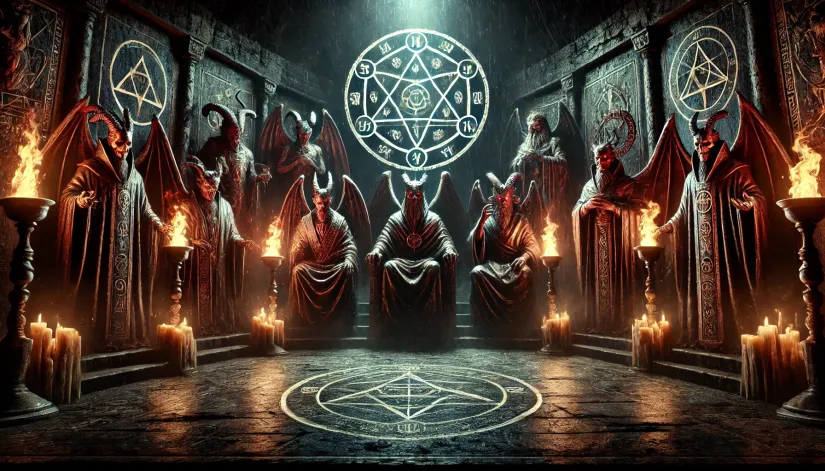
Hierarchy of Hell According to Dictionnaire Infernal
Without question, the “Dictionnaire Infernal” (written by Jacques Auguste Simon Collin de Plancy in 1818) is one of the most comprehensive and influential works on demonology.
Despite undergoing significant revisions and updates over the years (culminating in its most renowned edition published in 1863), the “Infernal Dictionary” is particularly famous for including 69 exquisite illustrations. The imagery vividly brought to life the various demons cataloged within its pages.
Speaking of demons, “Dictionnaire Infernal” features another classification based on the European royal courts’ structure. This way, Collin de Plancy created a recognizable hierarchy that was both accessible and richly detailed.
Here is the hierarchy of Hell according to the “Infernal Dictionary”:
Princes and High Officials of Hell:
- Beelzebub—Sovereign of Hell, creator of the Order of the Fly
- Satan—Deposed Prince of Hell, commander of the forces in opposition to Beelzebub
- Eurynome—Duke of Death and Holder of the Grand Cross of the Order of the Fly
- Moloch—Reigning Duke of the Realm of Tears (also a Grand Cross of the Order of the Fly)
- Pluto—Overlord of Flames, governor of numerous Hellish territories, and Grand Cross of the Order of the Fly
- Pan—Duke of the Incubi
- Lilith—Duchess of the Succubi
- Leonard—High Lord of the Sabbath and Bearer of the Knight of the Order of the Fly
- Balberith—High Priest of Hell and Master of Infernal Pacts
- Proserpina—Grand Duchess of Evil Spirits
Counselors and Advisors of Hell:
- Adramelech—High Chancellor of Hell and Grand Cross of the Order of the Fly
- Astaroth—Keeper of Hell’s Treasury and Knight of the Order of the Fly
- Nergal—Director of the Secretive Infernal Police
- Baal—Supreme General of Hell’s Armies and Grand Cross of the Order of the Fly
- Leviathan—Admiral of Hell’s Navy and Knight of the Order of the Fly
Diplomats of Hell:
- Belphegor—Envoy to France
- Mammon—Envoy to England
- Belial—Envoy to Italy
- Rimmon—Envoy to Russia
- Tammuz—Envoy to Spain
- Hutgin—Envoy to Turkey
- Martinet—Envoy to Switzerland
Infernal Judiciary:
- Lucifer—Chief Justice of Hell and Knight of the Order of the Fly
- Alastor—Chief Executor of Hell’s Punishments
House of the Infernal Fathers:
- Verdelet—Master of Ceremonies
- Succorbenoth—Leader of the Infernal Eunuchs
- Chamos—Chief Chamberlain and Knight of the Order of the Fly
- Nisroc—Head of the Infernal Kitchens and Organizer of Hell’s Feasts
- Behemoth—Principal Cupbearer
- Mullin—Head Valet
Treasure Keepers of Hell:
- Kobal—Master of Grotesque Entertainments
- Asmodeus—Supervisor of the Infernal Gambling Houses
- Nybbas—Court Jester of Hell
- Antichrist—Supreme Deceiver and Practitioner of Necromancy
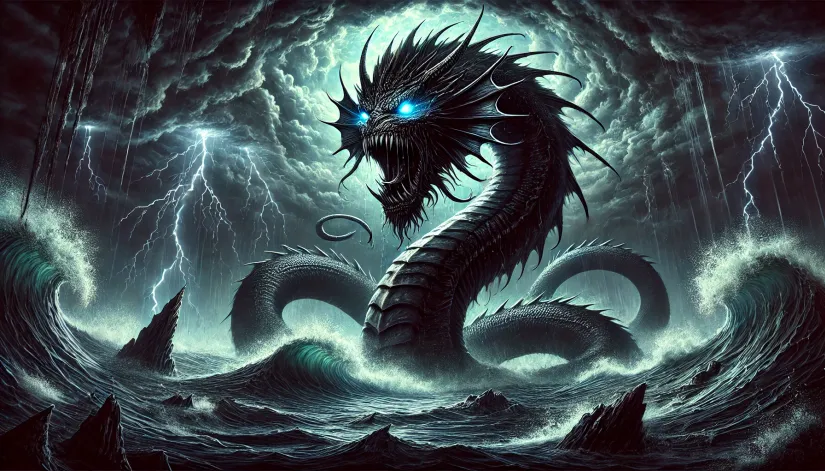
Hierarchy of Demons According to The Satanic Bible
Finally, we have the hierarchy of Hell proposed by the infamous “Satanic Bible.”
In this book, Anton LaVey introduced the concept of the Four Crowned Princes of Hell, each representing a fundamental force within the Satanic philosophy.
LaVey structured his book around these powerful entities, dedicating individual chapters to each prince:
- The Book of Satan: The Infernal Diatribe
- The Book of Lucifer: Enlightenment
- The Book of Belial: Mastery of the Earth
- The Book of Leviathan: The Raging Sea
However, LaVey didn’t come up with this classification by himself. He took inspiration from the hierarchical structure in “The Book of the Sacred Magic of Abramelin the Mage.”
Hierarchy of demons according to LaVey:
- Satan: Derived from the Hebrew term meaning “Adversary,” Satan is portrayed as the ultimate ruler of Hell. Just like in other writings, he is the symbol of rebellion and opposition to divine authority. He is associated with the element of fire and the South (as in the cardinal point). He can be summoned in satanic rituals using the powerful Seal of Baphomet.
- Lucifer: In Latin, Lucifer means “The Morning Star.” He represents enlightenment, pride, and the pursuit of knowledge. He is linked to the element of air, the East, and candlelight during ceremonial practices.
- Belial: In Hebrew, Belial means “Without a Master.” He personifies independence, self-sufficiency, and the rejection of subjugation. Belial is associated with the element of earth, the North, and the sword during invocations.
- Leviathan: The Hebrew word for “Serpent of the Abyss.” Leviathan is depicted as the Great Dragon (likely a symbol of the depths of primal secrecy and the subconscious). Leviathan is connected to the element of water, the West, and the chalice in rituals.
